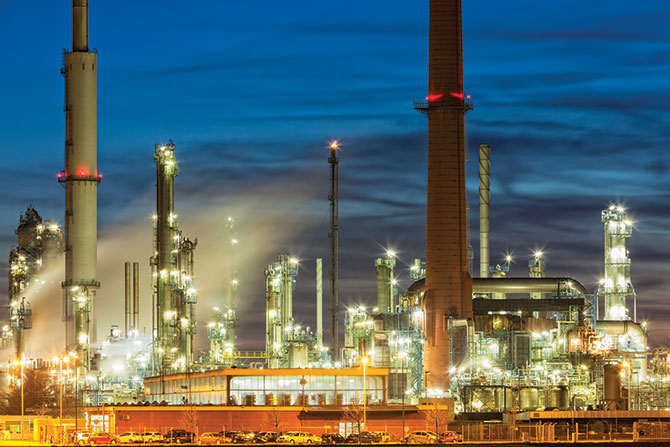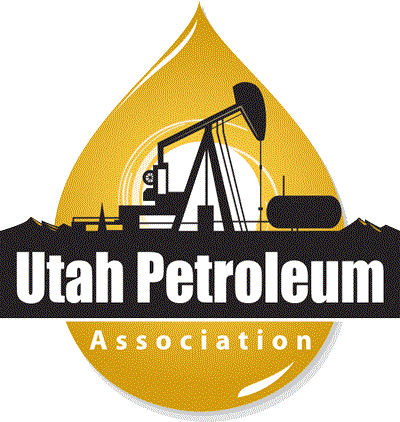By The Utah Petroleum Association
COVID-19 has resulted in the lowest U.S. petroleum consumption in history. The U.S. Energy Information Administration (EIA) has charted the previous five-year U.S. consumption range, and then the COVID induced demand drop compared from the beginning of the year, showing bottoming-out demand in March and April. EIA estimates motor gasoline consumption has declined the most, falling 40% nationally (43% in PADD 4 — the rocky mountain region, Utah, Colorado, Idaho, Montana and Wyoming), and is responsible for more than 50% of the total petroleum product demand drop. U.S. consumption of jet fuel has experienced the largest drop in relative terms, 62%, but was particularly hard hit in PADD 4, declining 84% at its peak. The decline in distillate or diesel fuel consumption has been less severe, about 20% lower than at the beginning of the year (only 16% in PADD 4), and that’s because diesel fuel is predominantly used for trucking, locomotive and agricultural sectors. Continued demand for distribution of food, medical supplies, and increased home deliveries and e-commerce contributed to the relatively stable demand.
At the same time, the industry was simultaneously faced with a supply shock as OPEC and Russia tried to use the demand challenges to their geopolitical gain. That combined demand nosedive and global flooding of the market on the supply side drove prices to historic lows, even resulting in oil futures dropping to nearly negative $40/bbl on April 20th. Here in Utah, this resulted in crude production declines of more than 15% (from 89,300 barrels of crude per day to 75,500 barrels per day) by April. There is roughly a two month lag in publicly available production data, and we expect to see further production declines reflected in the May and likely June data, but hopefully less severe. However, it’s important to keep in mind that Utah has one of the more integrated energy industries, with limited out of state crude supply and finished product coming into the state (two crude pipelines and one finished products line coming in). As such, the Salt Lake refineries have made multimillion dollar investments that are geared specifically toward processing Utah’s waxy crudes, which will help stabilize the upstream sector as we look toward recovery.
Thankfully, we are starting to see indicators that this recovery is slowly coming into view. The SLC refining utilization rate is usually around 90-95%, but with the nosedive in demand and storage filling up, refineries across the U.S. had to ratchet down production. As shown, PADD 4 was reporting a low in utilization at ~60% in late March, and has since increased up to roughly 85% at the beginning of July. As the economy reopening drives demand, refinery utilization is ratcheting back up and supporting recovery of crude production. While crude pricing isn’t expected to return to January levels in the near term, fundamentals are moving in the right direction.
In addition to responding to COVID-induced operational changes and swiftly changing economic drivers, our downstream members are also grappling with multiple new rulemakings, several of which could have significant long-term impacts. We have recently submitted comments on the Division of Air Quality’s Penalty Rule and the proposed 2020 UDAQ Monitoring Plan. We are also engaged on PM 2.5 Offsets and stack testing rules. The SLC refinery community has already made significant investments in air quality, resulting in reductions of 93% SOx and 62% VOC. Voluntary investments into Tier 3 fuels production will further drive down vehicle emissions. We remain committed to balanced and targeted measures to help solve the air quality challenge.
Suffice it to say that the state’s energy industry is carrying a heavy burden during this economic downturn. However, a silver lining could be that this crisis has highlighted the industry’s value to the state of Utah and its communities — the oil and gas industry delivers energy that keeps the state moving, powers homes, keeps store shelves stocked, fuels critical infrastructure and first responders, and represents valuable revenue many state programs depend on. Recent developments remind us that benefits (to state and agency budgets and local communities) associated with a thriving energy sector are not guaranteed and should not be taken for granted. I’m incredibly proud of the role the state’s oil and gas industry has played in delivering critical infrastructure through this crisis and pandemic. Access to affordable reliable and clean energy drives Utah’s community and is an essential part of our every day life. While the current circumstances are very difficult and impactful, our natural gas and oil companies have proven themselves as nimble and innovative in challenging times. We have weathered downturns before, and I am confident that we will do so again.
The Utah Petroleum Association
This story appears in Pub 1 2019-20 Issue 4 of the UPDATE Magazine.









